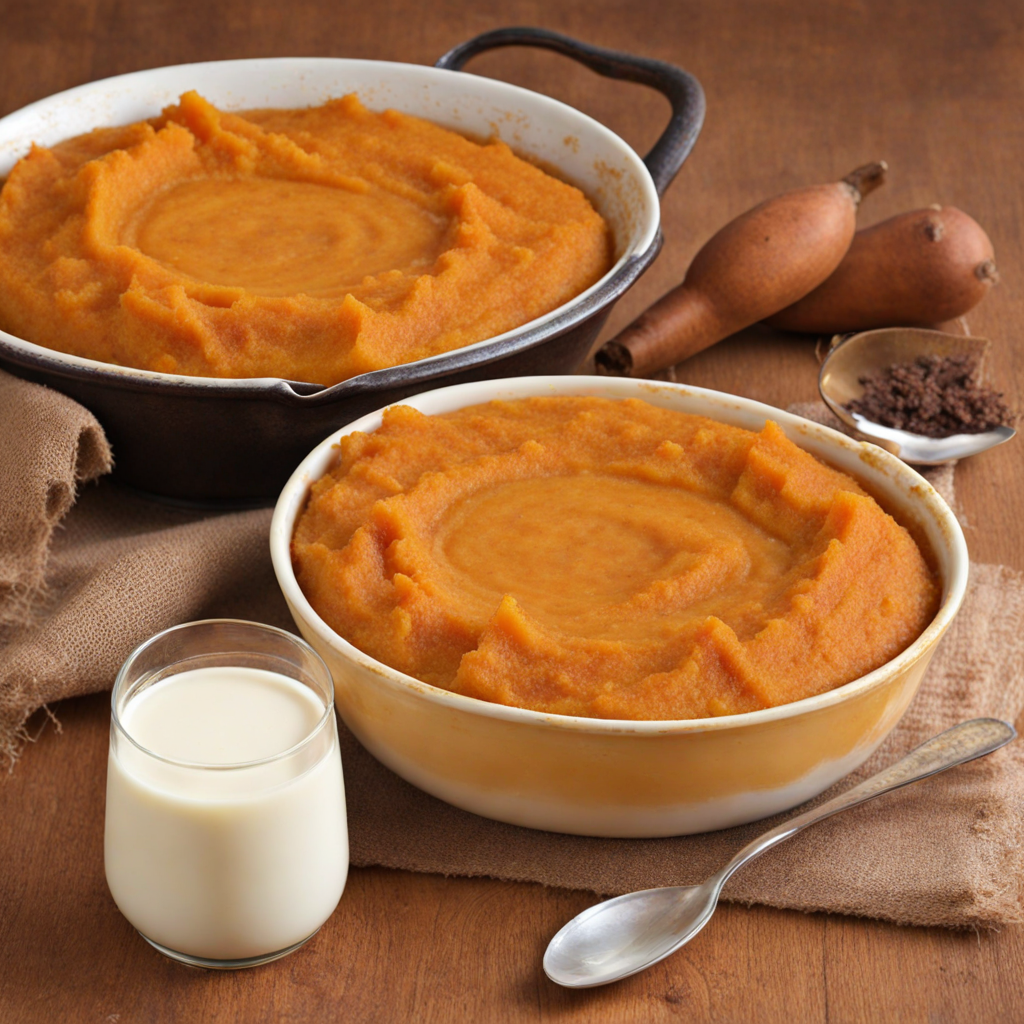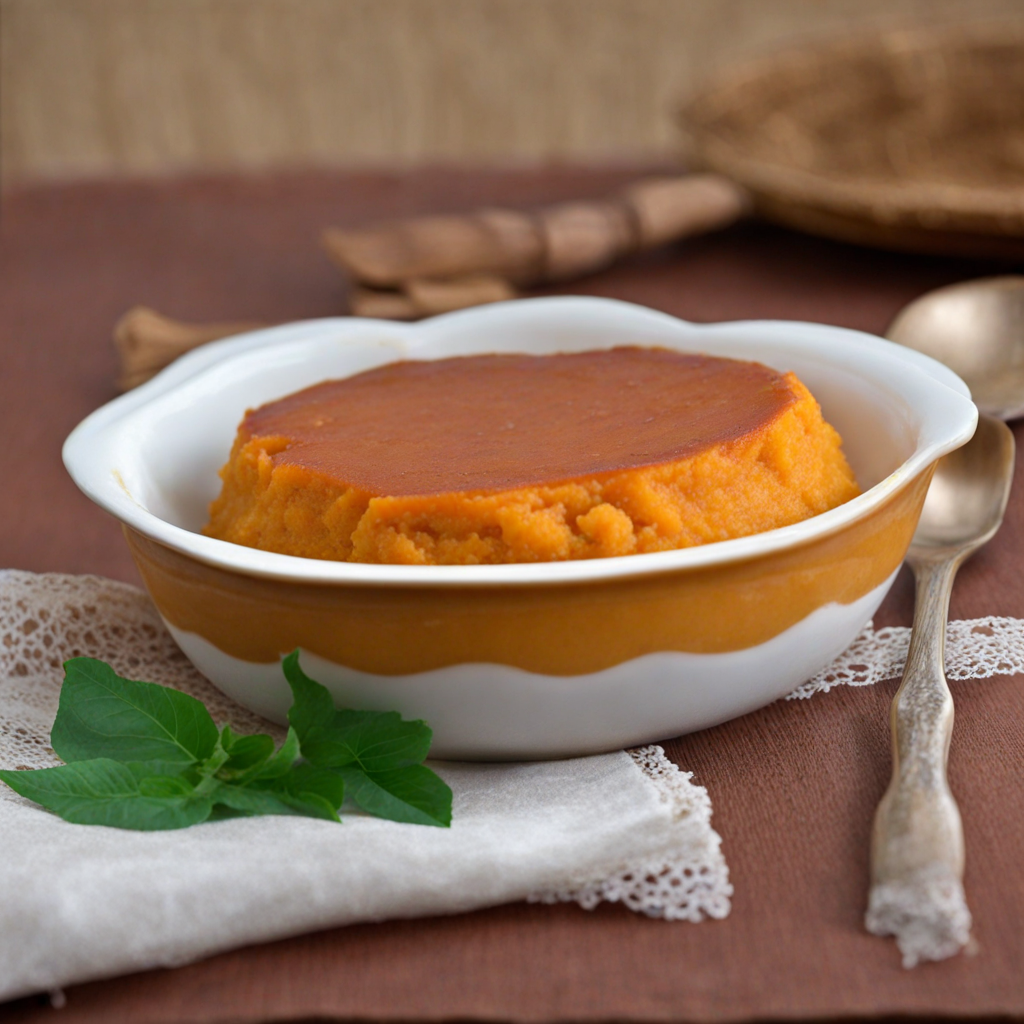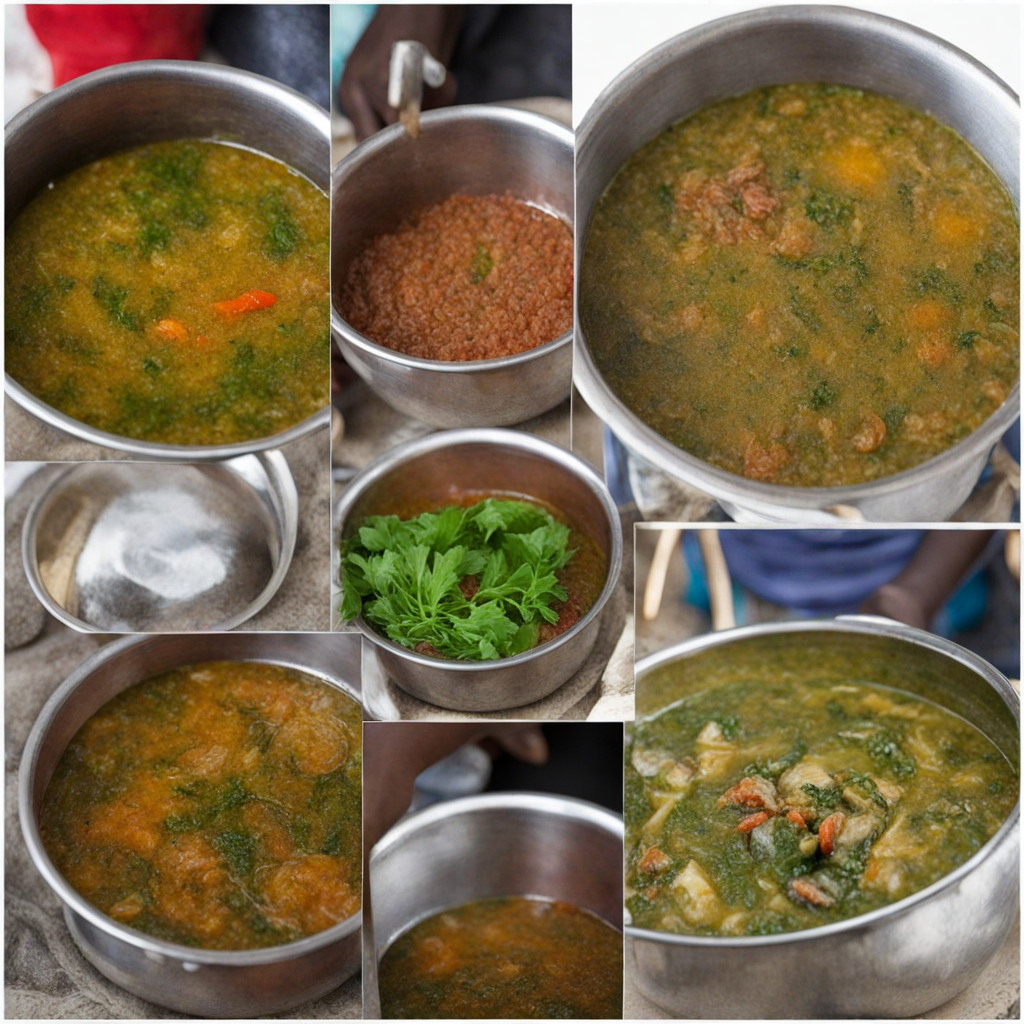Sweet Potato Pudding
Sweet Potato Pudding, a beloved dish in Guinea-Bissau, is a delightful treat that captures the essence of the region's culinary heritage. This pudding is crafted primarily from the vibrant, nutrient-rich sweet potatoes that are abundant in the area. The sweet potatoes are boiled until tender and then mashed into a smooth consistency, creating a foundation that is both creamy and naturally sweet. To this base, a blend of local ingredients such as coconut milk, sugar, and a hint of vanilla or cinnamon is often added, enhancing the pudding's flavor profile and giving it a fragrant aroma that entices the senses. As the mixture is combined, it is poured into a baking dish and baked until it sets into a soft, yet firm texture. The baking process caramelizes the sugars from the sweet potatoes and coconut milk, resulting in a golden-brown top that adds a slight crunch when first served. Each bite reveals a luscious creaminess that contrasts beautifully with the subtle nuttiness of the sweet potatoes, making it an irresistible dessert or snack. The richness of the coconut milk further elevates the pudding, providing a tropical twist that hints at the coastal influences of Guinea-Bissau's cuisine. Sweet Potato Pudding is often enjoyed warm, but it can also be served chilled, allowing the flavors to meld even further. Traditionally, it may be garnished with toasted coconut flakes or a sprinkle of cinnamon for added texture and flavor. This dish not only showcases the agricultural bounty of Guinea-Bissau but also reflects the warmth of its culture, as it is often shared among family and friends during gatherings and celebrations. Each spoonful of this pudding offers a taste of the region's rich culinary tapestry, making it a must-try for any adventurous food lover.
How It Became This Dish
The Sweet Potato Pudim: A Culinary Journey Through Guinea-Bissau #### Origins and Ingredients Pudim de Batata Doce, or Sweet Potato Pudding, is a beloved dessert in Guinea-Bissau, a small West African nation known for its rich cultural heritage and diverse culinary traditions. The pudding is made primarily from sweet potatoes, which have been cultivated in the region for centuries. Sweet potatoes (Ipomoea batatas) are indigenous to Central and South America but were introduced to Africa in the 16th century through transatlantic trade routes. Their adaptability to various climates and soils made them a staple crop in many African countries, including Guinea-Bissau. The basic ingredients of Pudim de Batata Doce are sweet potatoes, sugar, milk or coconut milk, and eggs. Spices such as cinnamon and vanilla may also be added for flavor. The combination of these ingredients reflects the fusion of indigenous African cooking methods with influences from Portuguese colonialism, which has played a significant role in shaping the culinary landscape of Guinea-Bissau. #### Cultural Significance Pudim de Batata Doce holds a special place in the hearts of the people of Guinea-Bissau. It is more than just a dessert; it symbolizes family and community gatherings. Traditionally, this pudding is served during celebrations such as weddings, religious festivals, and family reunions, where it represents prosperity and the sweetness of life. The act of preparing and sharing this dish fosters connections among family members and friends, reinforcing the social fabric of the community. In addition to its celebratory role, sweet potatoes have significant nutritional value, making Pudim de Batata Doce not only a treat but also a source of sustenance for many families. The dish is often made during harvest seasons when sweet potatoes are plentiful, serving as a comforting reminder of the agricultural bounty of the land. #### Development Over Time The evolution of Pudim de Batata Doce can be traced through various historical and cultural transformations in Guinea-Bissau. During the colonial period, Portuguese influences began to emerge more prominently in the local cuisine. Dishes that were originally simple and utilitarian took on new dimensions as Portuguese techniques and ingredients were introduced. The incorporation of milk and sugar into the pudding reflects this culinary exchange, transforming a basic sweet potato dish into a creamy, indulgent dessert. The post-colonial era brought significant social and economic changes, impacting food production and consumption patterns in Guinea-Bissau. Following independence from Portugal in 1973, the country faced numerous challenges, including political instability and economic hardship. Traditional food practices became even more important as people sought to maintain their identity and heritage during turbulent times. Pudim de Batata Doce, with its roots in both African and Portuguese culinary traditions, became a symbol of resilience and cultural continuity. In recent years, there has been a growing interest in traditional foods as Guinea-Bissau embraces its identity in a globalized world. Chefs and home cooks alike have begun to revive traditional recipes, experimenting with new ingredients and presentation styles while honoring the essence of the original dish. This resurgence of interest in Pudim de Batata Doce reflects a broader movement towards valuing indigenous ingredients and culinary practices that are both nutritious and culturally significant. #### Preparation and Presentation The preparation of Pudim de Batata Doce is a labor of love that often involves family collaboration. The process begins with peeling and boiling the sweet potatoes until they are tender. Once cooled, they are mashed and combined with sugar, milk (or coconut milk), and eggs, creating a smooth mixture. Spices such as cinnamon and vanilla add aromatic depth to the pudding. The mixture is then poured into a greased baking dish and baked until set, resulting in a rich, custard-like texture. Traditionally, Pudim de Batata Doce is served chilled, often garnished with a sprinkle of cinnamon or grated coconut. The vibrant orange hue of the sweet potatoes makes for an eye-catching presentation, and the creamy texture invites indulgence. In contemporary settings, chefs may experiment with plating, serving the pudding alongside fresh fruits or sauces that complement its flavors. #### Conclusion: A Dish of Heritage and Hope Pudim de Batata Doce is more than just a dessert; it is a testament to the resilience and creativity of the people of Guinea-Bissau. Its history reflects the intertwining of indigenous practices with colonial influences, and it serves as a reminder of the importance of food in connecting people to their cultural heritage. As Guinea-Bissau navigates the complexities of modernity, the pudding stands as a symbol of hope, reminding its people of the sweetness of tradition and the power of community. In an increasingly globalized world, the preservation of traditional foods like Pudim de Batata Doce is vital. It allows future generations to connect with their roots while sharing their culinary heritage with the world. As more people discover the flavors of Guinea-Bissau, the sweet potato pudding will continue to be a cherished dish—one that tells the story of a nation rich in culture, history, and community spirit.
You may like
Discover local flavors from Guinea-bissau







